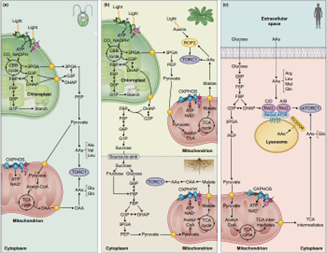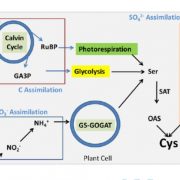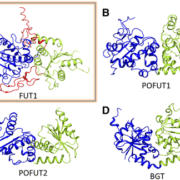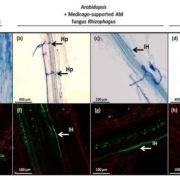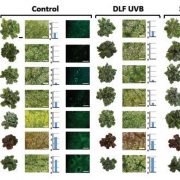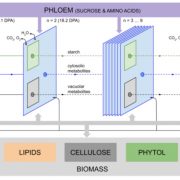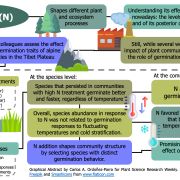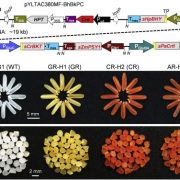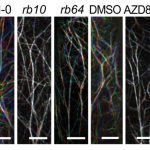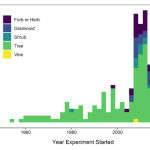Tansley Insight: Analyzing the impact of autotrophic and heterotrophic metabolism on the nutrient regulation of TOR (New Phytol.)
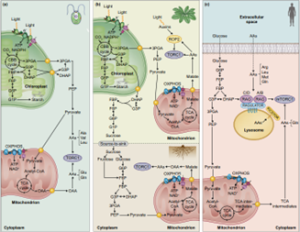 A protein kinase, target of rapamycin (TOR), controls cell growth and metabolism in all eukaryotes. The role of TOR in regulating synthesis and breakdown of organic compounds in response to nutrients, hormones and cellular energy to promote growth and development is universal in autotrophs and heterotrophs. TORC1 is one of TOR complexes conserved for several functional roles. Although, the roles of TORC1 are similar in all eukaryotes, its takes cues from each organism based on their mode of nutrition. Mallen-Ponce et al. reviewed the roles of amino acids and carbon compounds in regulating TORC1 in different eukaryotes. Amino acids activate the functional role of TORC1 in microalgae and yeast. But in mammals, additional input from growth factors is needed to activate mTORC1. In plants, nitrates and ammonium are the primary nitrogen signals to activate TORC1. Carbon in form of fixed CO2 regulates TORC1 activity in microalgae, whereas in mammals the glucose form is used and in plant roots, glucose converted to sucrose activates TORC1. Light input is required for complete activation of TORC1 in shoot apexes, with auxins being the connecting signal. Further studies on how TORC1 perceives amino acids and carbon availability in plants and algae are needed. (Summary by Idowu Obisesan @IdowuAobisesan) New Phytol. 10.1111/nph.18450
A protein kinase, target of rapamycin (TOR), controls cell growth and metabolism in all eukaryotes. The role of TOR in regulating synthesis and breakdown of organic compounds in response to nutrients, hormones and cellular energy to promote growth and development is universal in autotrophs and heterotrophs. TORC1 is one of TOR complexes conserved for several functional roles. Although, the roles of TORC1 are similar in all eukaryotes, its takes cues from each organism based on their mode of nutrition. Mallen-Ponce et al. reviewed the roles of amino acids and carbon compounds in regulating TORC1 in different eukaryotes. Amino acids activate the functional role of TORC1 in microalgae and yeast. But in mammals, additional input from growth factors is needed to activate mTORC1. In plants, nitrates and ammonium are the primary nitrogen signals to activate TORC1. Carbon in form of fixed CO2 regulates TORC1 activity in microalgae, whereas in mammals the glucose form is used and in plant roots, glucose converted to sucrose activates TORC1. Light input is required for complete activation of TORC1 in shoot apexes, with auxins being the connecting signal. Further studies on how TORC1 perceives amino acids and carbon availability in plants and algae are needed. (Summary by Idowu Obisesan @IdowuAobisesan) New Phytol. 10.1111/nph.18450


